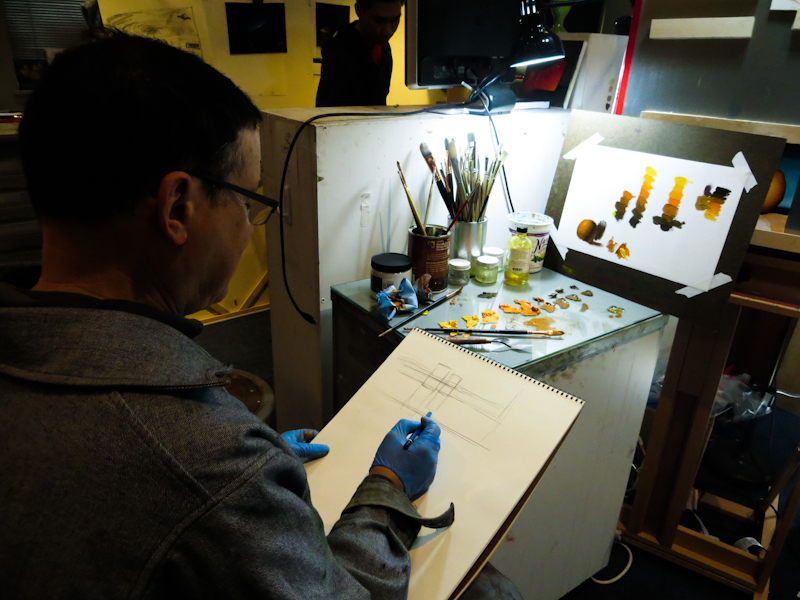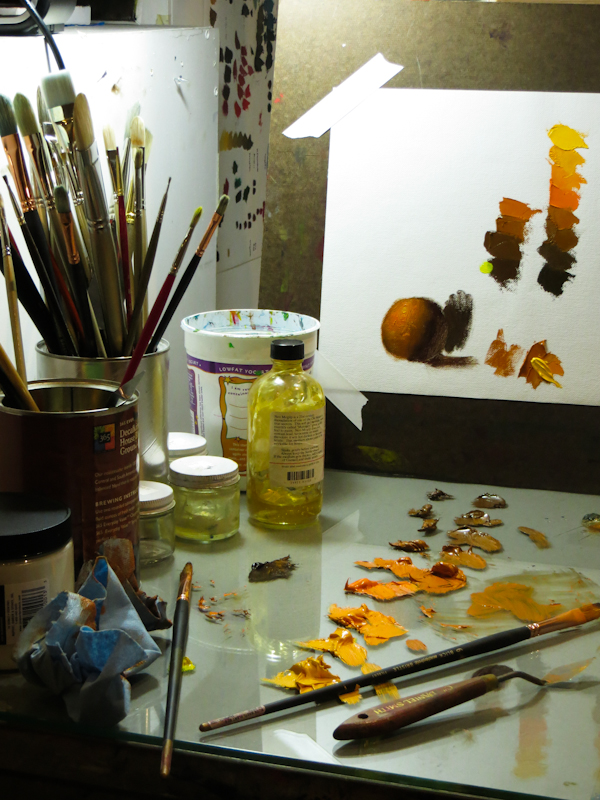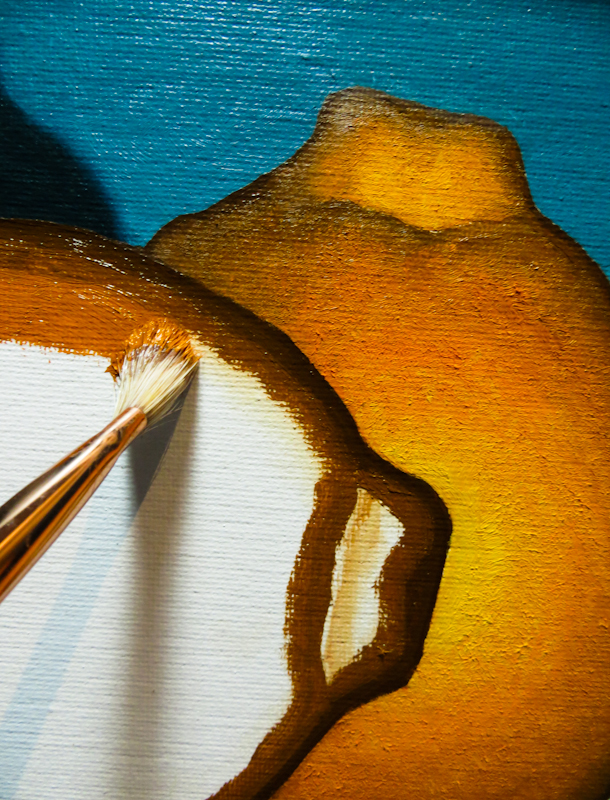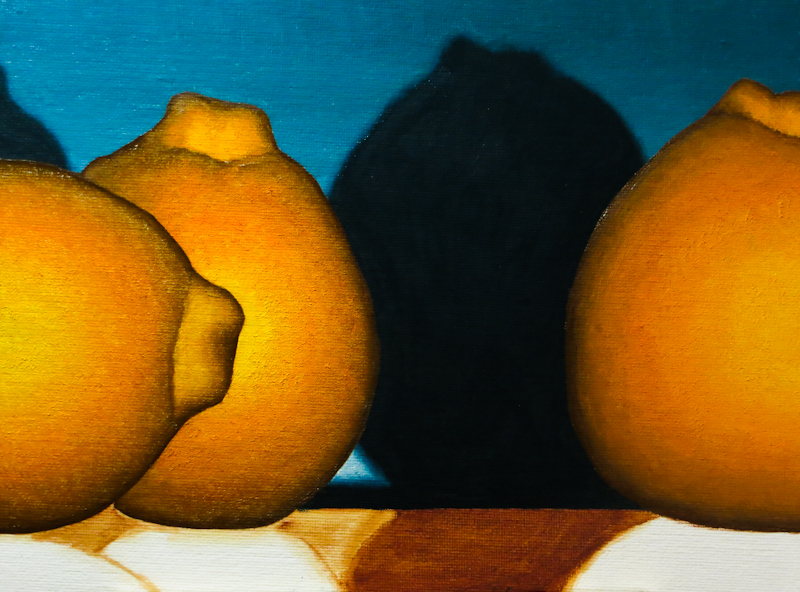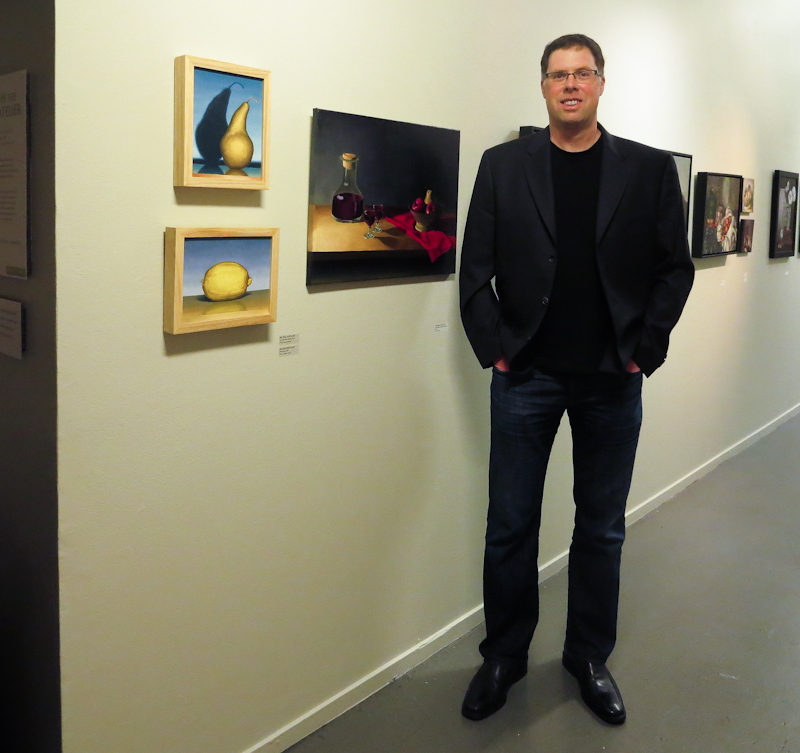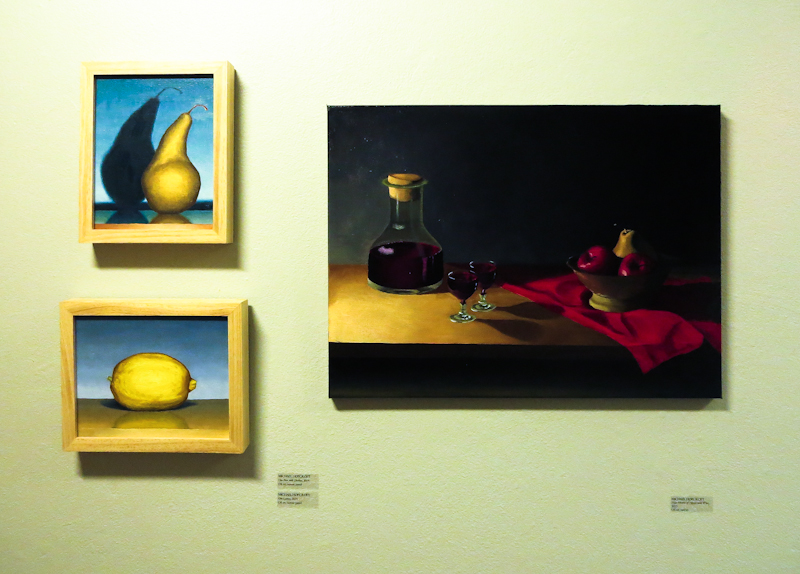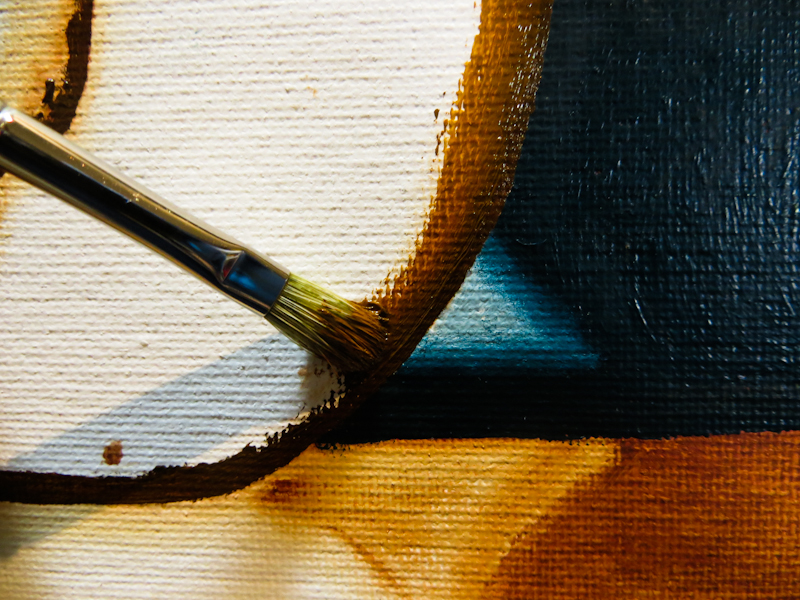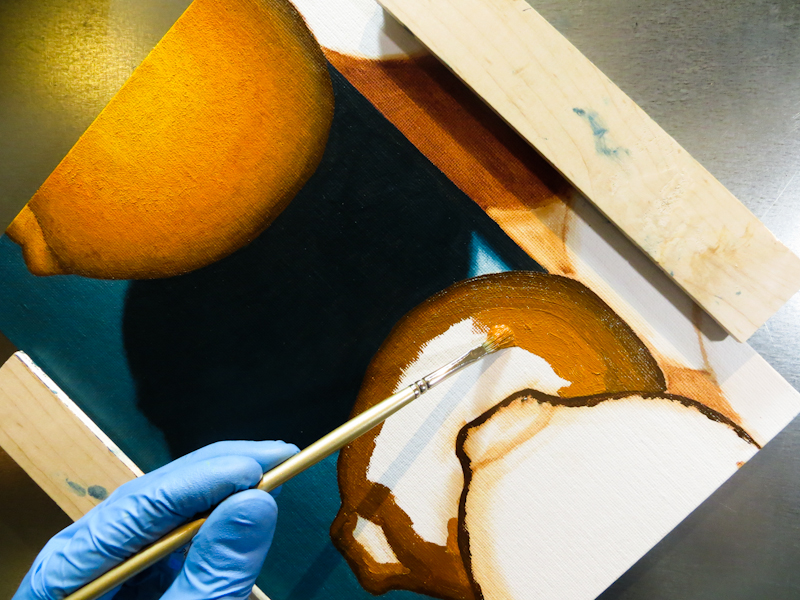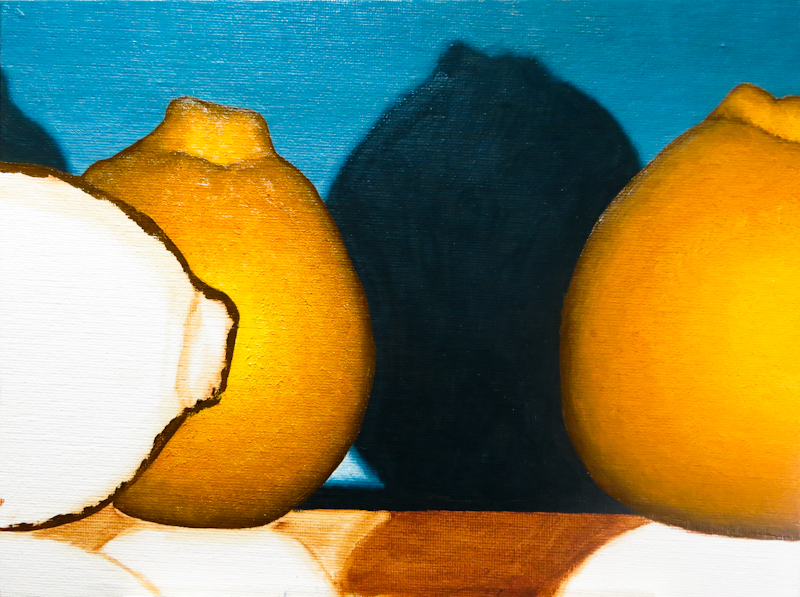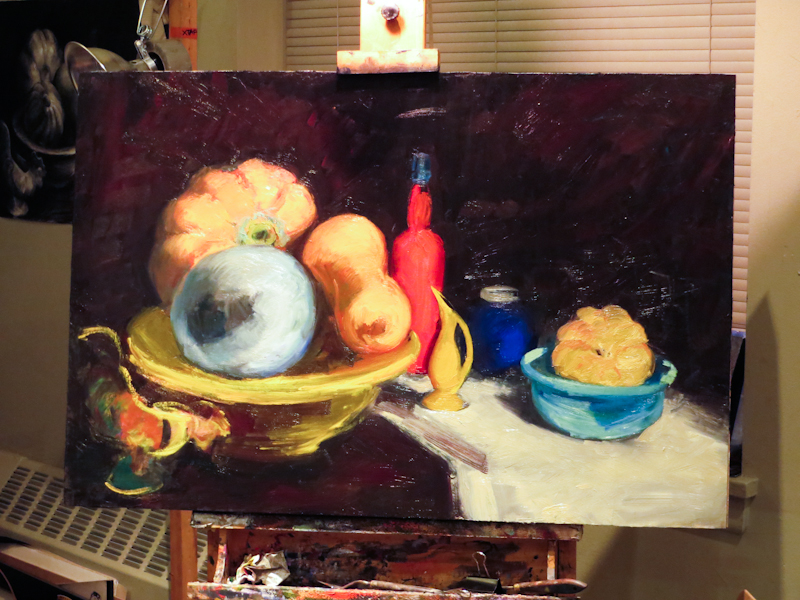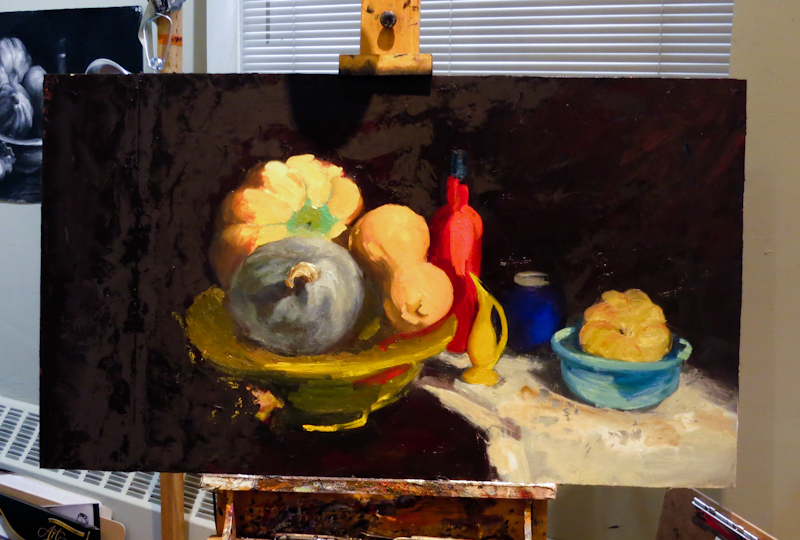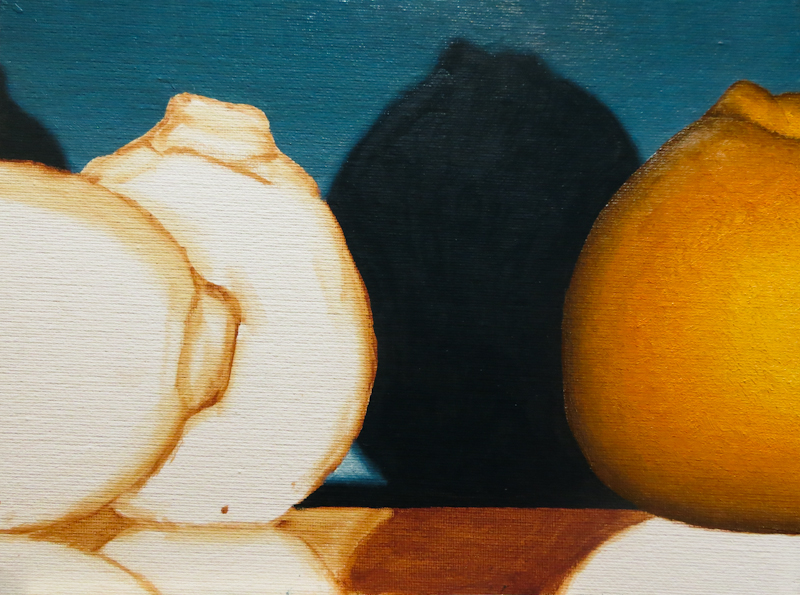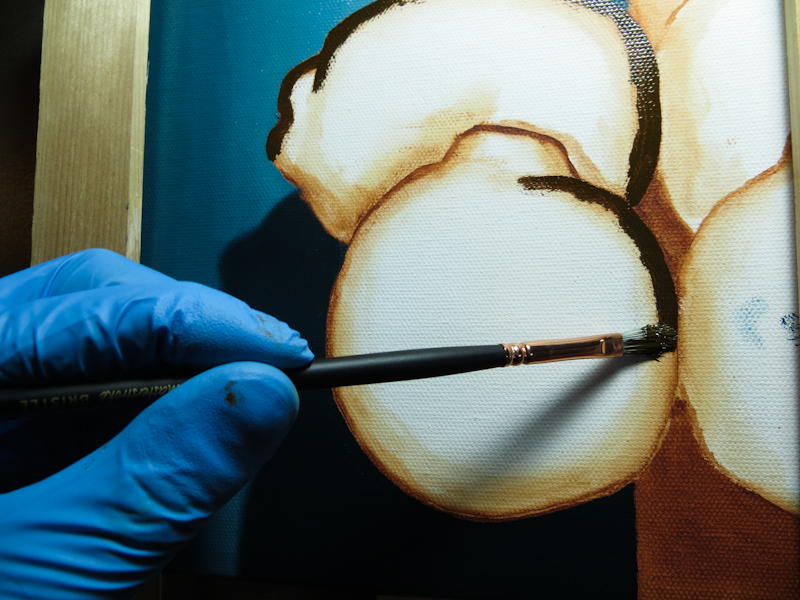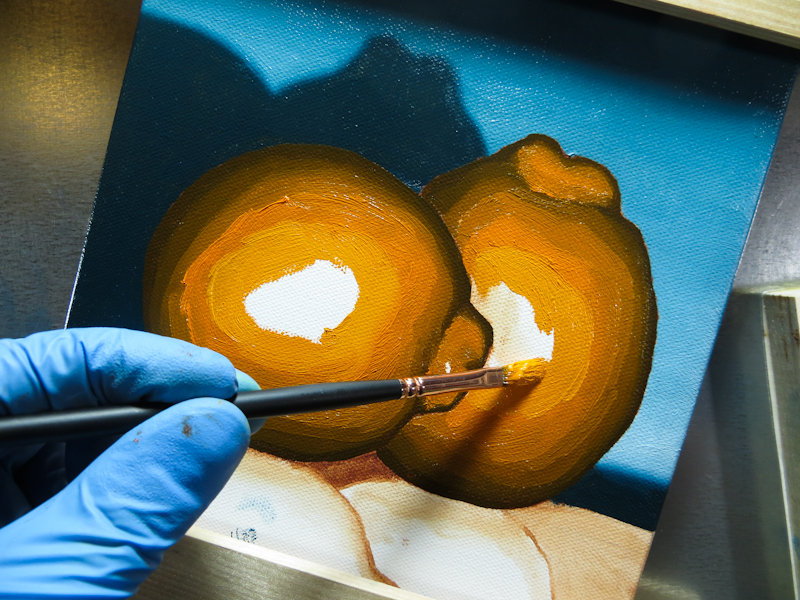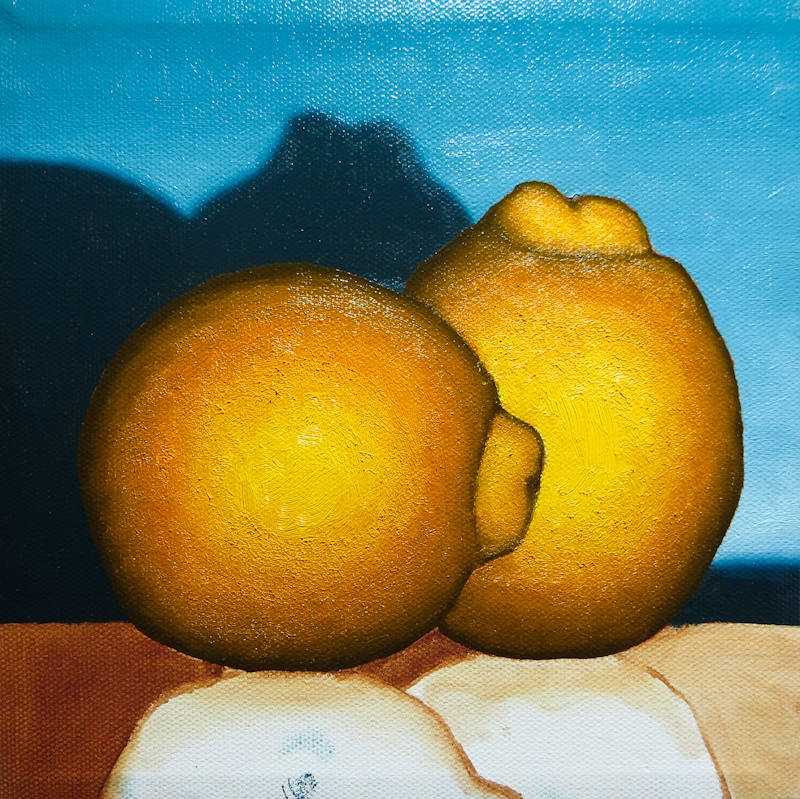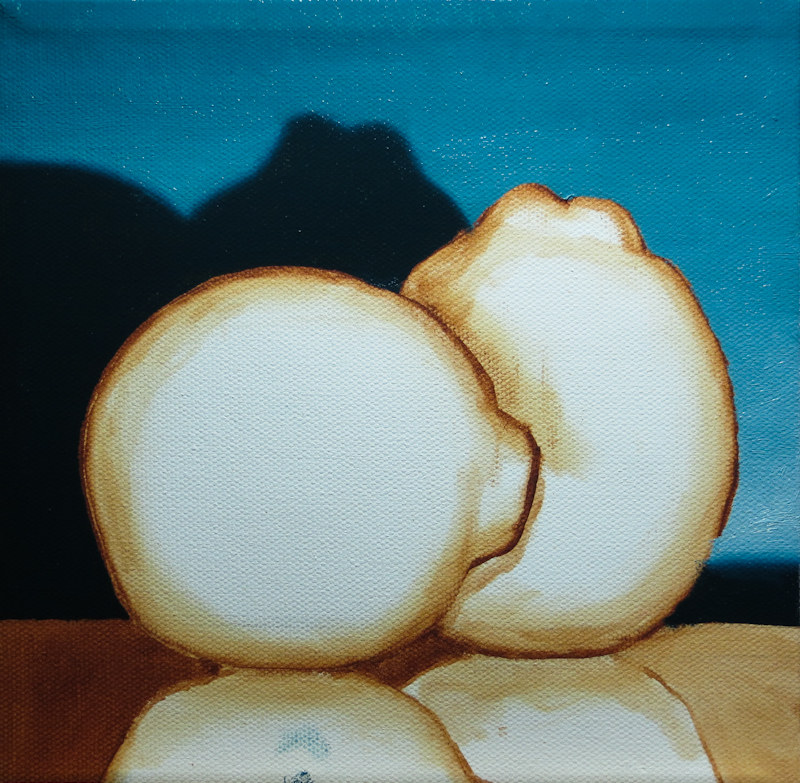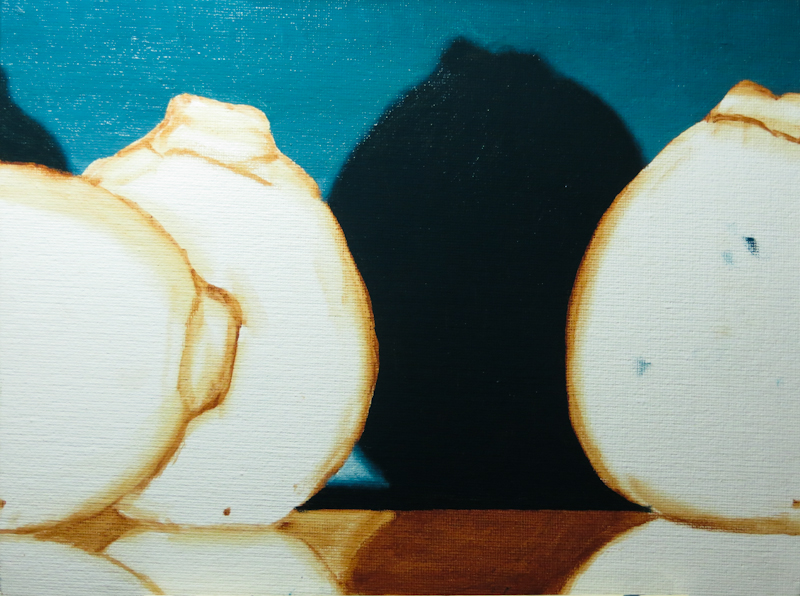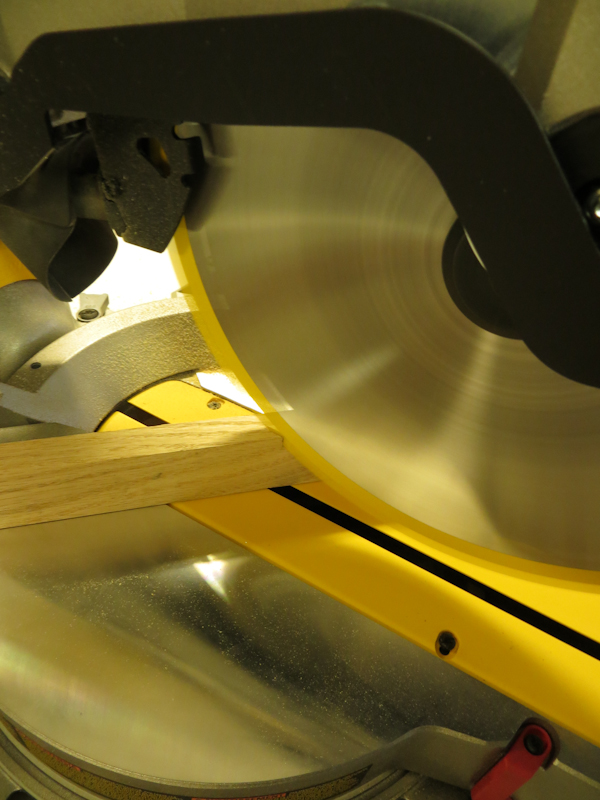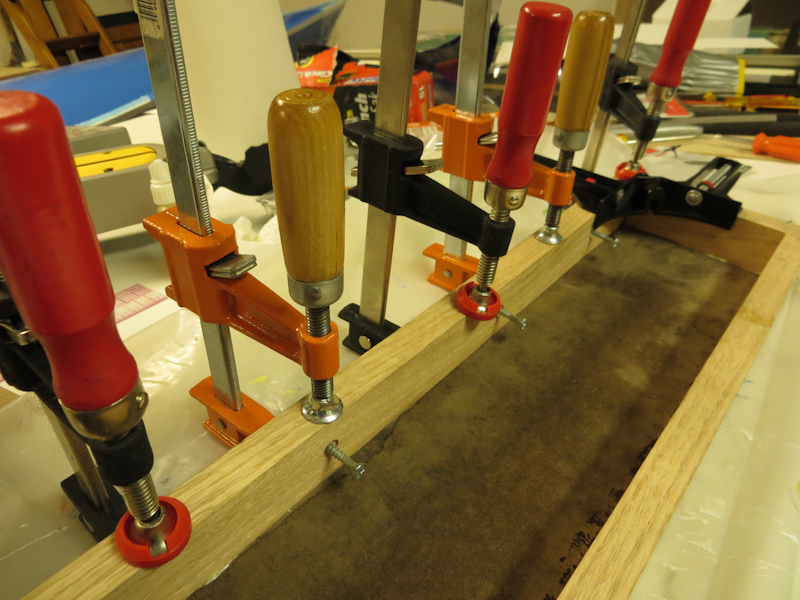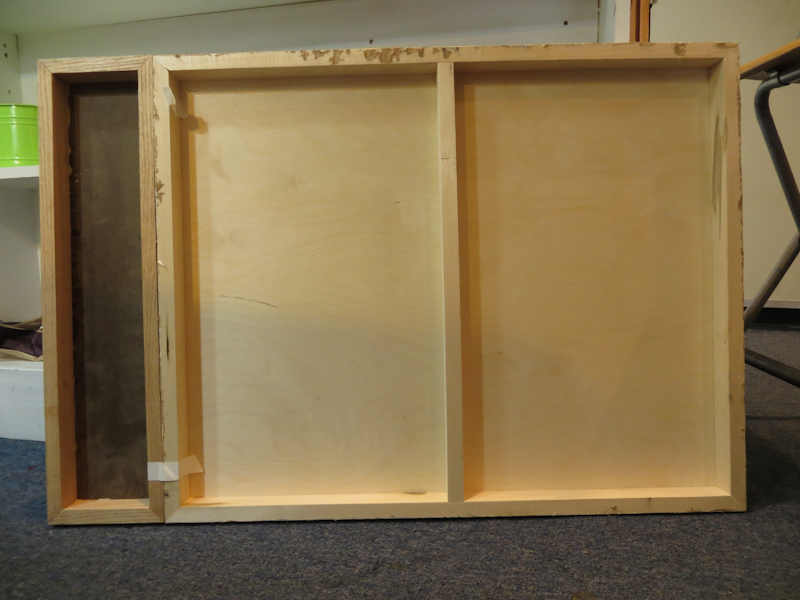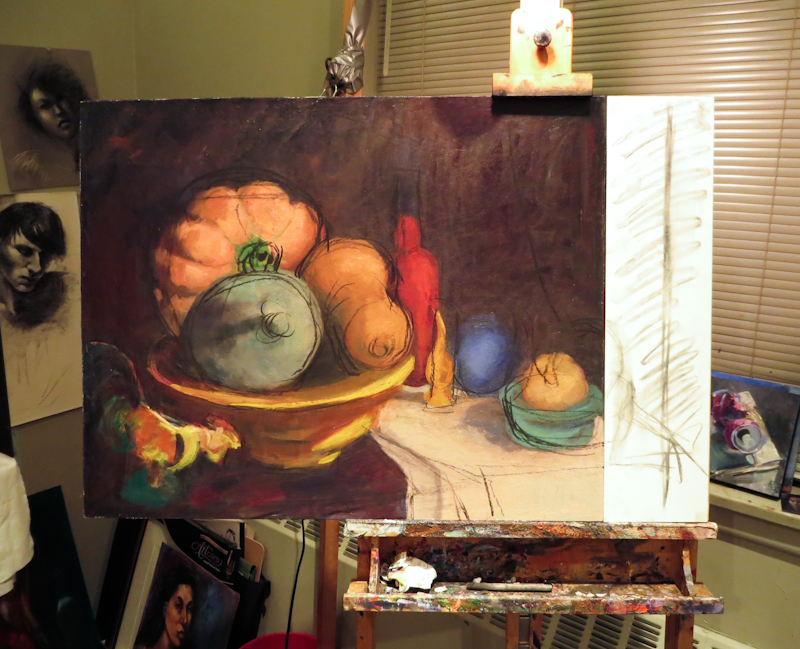One of the cool things about art school is that the instruction is fundamentally visual. Years ago when I first attended Gary Faigin’s class on perspective, I was delighted to find that the entire lecture was conducted in drawings. Sure Gary spoke to us, but for the entire 90 minutes he was also drawing with charcoal and chalk on a giant, 4′ x 8′ piece of sheetrock, continually morphing the image from one scene to another as he made different points.
I was thinking about this recently in crit as Gary painted an orange to illustrate brushwork and then grabbed my sketchbook to make a point about eye level.
It makes complete sense that writing is taught with words and art is taught with images, but I am still surprised and delighted every time I get to see a demo.

